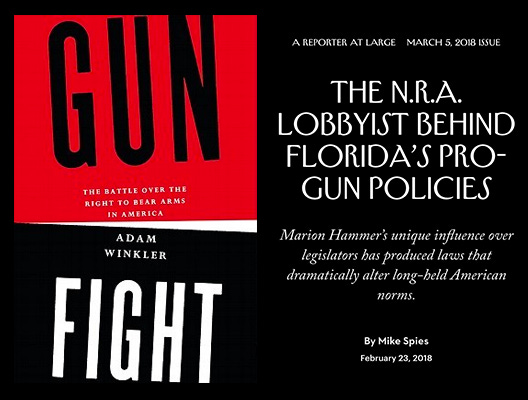Good morning, subscriber,
And congrats on making it to the end of another week! I just checked the news for the first time today and learned that the American owner of one hundred ninety Papa John’s franchises in Russia refuses to close his pizza joints. If his resolute belief in Russians’ appreciation of “a good pizza” isn’t a fitting encapsulation of the doggedly insane nature of 2022, I don’t know what is.
Speaking of dogged—and insane—let’s talk about Stand Your Ground laws (which I’ll call “SYG” or “SYG laws”). Conceived by the NRA in the early 2000s, SYG removes the duty to retreat from an attacker before responding with deadly force. In other words, in states that have SYG laws, if you’re afraid, you can legally shoot someone even if there are other options available like, say, fleeing or having a conversation before jumping to conclusions.
Why bring this up now? Well, while war rages in Europe, SYG laws are enabling a smaller but still significant and deadly assault on US citizens. A report last week found that SYG has led to an “abrupt and sustained” spike in monthly homicide rates since the early 2000s, particularly in southern states like Florida that embraced the laws early on. This is despite the fact that activists, law enforcement, prosecutors, and academics have long warned about the lethal consequences of this violent legislation. Most notably, you might recall that the laws helped George Zimmerman evade punishment for shooting and killing Trayvon Martin in 2012.
What you might not know, however, is that these laws are the brainchild of one person: an 82-year-old woman named Marion Hammer. In fact, much of the NRA’s success over the last fifty years, and its successful transformation from a hunting and educational group to a notorious lobbying organization, can be traced to Hammer. And to see how the NRA’s lobbying strategy largely revolves around this 4 foot 11 Floridian carrying a handgun in her purse, let’s head back to 1871...

...when William C. Church and George W. Wingate founded the National Rifle Association. Both men had fought for the North in the Civil War and were shocked by the poor marksmanship of Union soldiers, many of whom were from cities and whose inexperience with firearms allowed far outnumbered Confederate soldiers to extend the war. So, with government subsidies, the two men purchased land on Long Island and began holding target-shooting competitions in the 1870s and 80s.
As the group expanded over the following decades, its leaders became more involved in politics. Surprisingly, contrary to the organization’s reputation today, the older, chiller version of the NRA was open-minded when it came to gun control. In the 1920s and 30s, the organization’s leaders lobbied states to enact the Uniform Firearms Act, which banned anyone without a permit and a “proper reason” from carrying a concealed gun in public. The NRA also supported the National Firearms Act of 1934 and the Federal Firearms Act of 1938, which heavily taxed certain firearms and created a licensing system for dealers sending guns across state lines. Now, to be sure, “the NRA wasn’t a blind supporter of any and all gun control,” writes historian Adam Winkler. Yet its leaders “were willing to compromise with lawmakers to enhance public safety.”1 Their sensible approach was reflected in the motto plastered on the walls of its Washington, D.C. headquarters in 1957: FIREARMS SAFETY EDUCATION, MARKSMANSHIP TRAINING, AND SHOOTING FOR RECREATION.
But the association began to take a turn for the hostile in the 1960s. Amid rising crime rates, more and more people joined the NRA less for recreation and education than for self-protection. A prime example of the group’s increasingly radical membership was Harlon Carter, a gun lover since childhood who set 44 national shooting records during his lifetime.
In the 70s, as state and federal lawmakers proposed stricter gun control, Carter and his militant supporters in the NRA came to see the organization as the country’s only bulwark against civilian disarmament. Carter subscribed to what he called the “Potato Chip” theory of gun control: lawmakers take “a little nibble first, and I’ll bet you can’t eat just one” (sounding eerily like the Papa John’s theory of pizza franchising).2 In 1977, lest anyone take any more of his chips, he launched a coup against the NRA’s leadership and changed the group’s focus literally overnight from marksmanship training and education to protecting gun rights. The aggressive shift was revealed in the new motto on the walls of NRA HQ: THE RIGHT OF THE PEOPLE TO KEEP AND BEAR ARMS SHALL NOT BE INFRINGED.
Still, one thing was missing: a strategy to infringe on this perceived infringing. Enter Marion Hammer.

After her father was killed in World War II, Hammer’s mother sent her to live with her grandparents on a farm in South Carolina. There, Hammer began shooting rifles when she was 6-years-old and developed a lifelong belief in using guns as a means of self-protection. As she later articulated, “If you came at me, and I felt that my life was in danger or that I was going to be injured, I wouldn’t hesitate to shoot you.”3 This explains why few people ever played contact sports with her, and why a few decades later, after settling in Florida with her husband and three daughters, she began volunteering for the NRA in the 60s.





